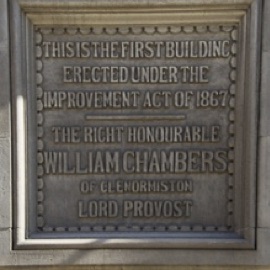45 Blackfriars St, EH1 1NB

Struck by the mid-19th-century potato famine, impoverished rural workers from Ireland and the Scottish Highlands moved to Edinburgh and into the dilapidated buildings left behind by the local nobility and middle class who, by then, had relocated to New Town. Larger homes previously occupied by the wealthy were subdivided into small lodgings, often shared by multiple families. Severe overcrowding and poor sanitation created a fertile ground for the spread of disease. In his 1850 survey on the living conditions in Blackfriars Wynd, Dr George Bell reported 10 Irish immigrants, including a child dying of consumption, sharing a single room. The situation raised much discussion among Victorian sanitary workers, who lamented the misery of the poor just as keenly as their moral failings. In 1867, the City Improvement Act made provisions to demolish all buildings on the east side, widen the roadway, and erect new tenements in Blackfriars Wynd (subsequently renamed Street). 45-51 Blackfriars Street, at the junction of New Skinner`s Close, displays a plaque to commemorate the Blackfriars Building Association of 84 working men, a co-operative effort to finance and erect two buildings on clearance sites under the Improvement Act.


(National Portrait Gallery)

Find out more





